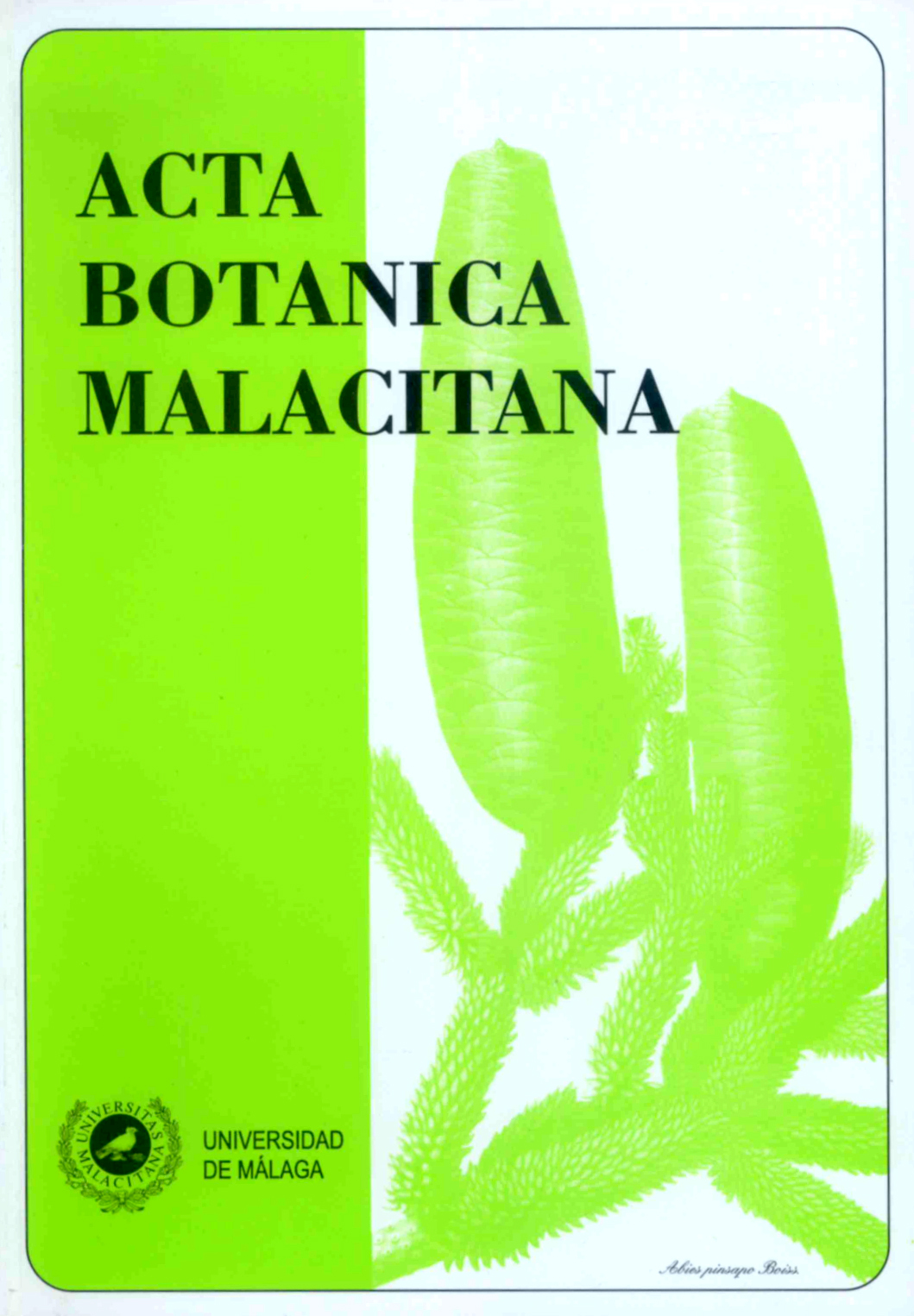Revisión del género Helminthotheca Vaill. (Cichorieae, Compositae). Revision of the genus Helminthotheca Vaill. (Cichorieae, Compositae).
DOI:
https://doi.org/10.24310/abm.v41i0.2487Abstract
Español. Se presenta la revisión taxonómica del género Helminthotheca Vaill., basada en el estudio morfológico de material en toda su área de distribución. El género, que se incluye en la subtribu Hypochaeridinae de la tribu Cichorieae, tiene una distribución centrada principalmente en el oeste de la Región Mediterránea, y se diferencia del resto de los géneros de la subtribu por la presencia de acúleos ± espinosos y setas gloquidiadas en los tallos, hojas y a veces en las brácteas del involucro, pero sobre todo por la presencia de 5 hojas involucrantes que rodean al verdadero involucro del capítulo. Sobre la base del ciclo de vida, la morfología de las hojas involucrantes y los tipos de frutos, las distintas especies del género se reagrupan en tres secciones: Helminthotheca, Vigineixia y Eliptica. Las secciones Helminthotheca y Vigineixia, ambas monotípicas, comprenden especies anuales, con hojas involucrantes cordiformes y los frutos del capítulo dimorfos. La sección Eliptica, con 5 especies reconocidas, se diferencia de las otras secciones por incluir especies perennes, con hojas involucrantes ovadas o elípticas y frutos del capítulo homomorfos. En este trabajo se efectúa una combinación nueva, Helminthotheca sect. Vigineixia (Pomel) Talavera, y se da un nombre nuevo a Picris subgen. Deckera sensu Battandier: Helminthotheca sect. Eliptica Talavera & Tremetsberger. La sección Eliptica es la más compleja debido, sobre todo, a la hibridación interespecífica cuando las especies conviven, habiéndose detectado zonas híbridas en el N del Guadalquivir al W de Sierra Morena (S de España), en el extremo más occidental de las montañas del Rif, cerca de la Península Tingitana, en el E del Rif (NW of Marruecos), en las montañas del Atlas argelino y en las colinas arcillosas de Beni-Zenthis (Orán, Argelia).
English. Based on a morphological study, we present the revision of the genus Helminthotheca Vaill., a small member of the subtribe Hypochaeridinae of the tribe Cichorieae, which is mainly distributed in the western part of the Mediterranean region. Helminthotheca is differentiated from the remaining genera of the subtribe by the presence of ± spiny prickles and glochid-like bristles in stems, leaves and, sometimes, involucral bracts. The main distinguishing character, however, is the presence of 5 outer involucral leaves, which surround the proper involucre of the head. Based on the life cycle, the morphology of the outer involucral leaves and the fruit types found in the head, species of Helminthotheca are rearranged in three sections: Helminthotheca, Vigineixia and Eliptica. The sections Helminthotheca and Vigineixia, both monotypic, are annuals with cordate outer involucral leaves and dimorphic fruits in the head. The section Eliptica, with five recognized species, is differentiated from the other sections by its perennial habit, ovate or elliptic outer involucral leaves and homomorphic fruits in the head. Here, we make a new combination, Helminthotheca sect. Vigineixia (Pomel) Talavera, and give a new name to Picris subgen. Deckera sensu Battandier, Helminthotheca sect. Eliptica Talavera & Tremetsberger. The section Eliptica is the most complex section, due mainly to interspecific hybridization between all species, when they co-occur, with hybrid zones having been detected in the N of the Guadalquivir River in the W of the Sierra Morena (S Spain), in the westernmost part of the Rif Mountains, near the Tangier Peninsula, in the E Rif and Middle Atlas (NW Morocco), in the Algerian Atlas Mountains and in the argillaceous hills of Beni-Zenthis (Oran, Algeria).
Downloads
Metrics
Downloads
Published
How to Cite
Issue
Section
License
All information related to the licensing of published works in Acta Botanica Malacitana and copyright can be found in our Editorial Policy.







1.png)
